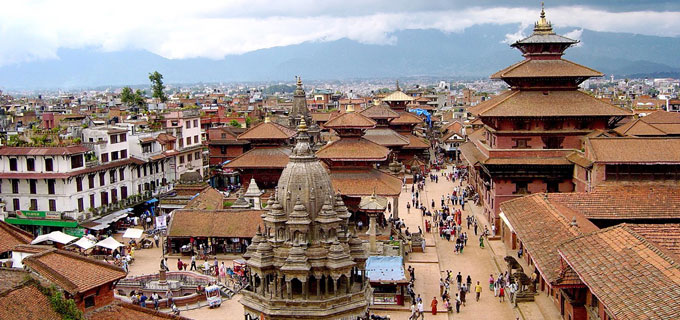
After I left my village in eastern Nepal in 1999 to study in the capital city of Kathmandu, I found myself missing home. Especially my childhood temple.
Growing up, I would follow my mom each Saturday to the Hindu religious temple, Danta Kali, a half hour outside my hometown. The scene became reassuringly familiar: many believers would be waiting in line to reach the main statue of gods Shive and Ganesh and goddesses Parvati and Durga, where people would make offerings. My mom and I made our own offerings; we’d hand out fruit and flowers to people there. I felt less of a connection to the religious ritual than to the old, young, and disabled people I met each Saturday. I learned about pain, humility, and kindness there.
So, after I settled into a cramped two-room apartment in Kathmandu city that I shared with my younger brother, I found I missed those Saturdays most of all. I also felt lonely—and overwhelmed. Not only did I have to study, but I had to manage the apartment—cooking, shopping, even doing my brother’s laundry (as required under our assigned gender roles). I decided that, to relax my mind and get through these years of college, I needed to find a new temple.
The good news is that I had lots of choices. Kathmandu is sometimes referred to as the city of temples, but I didn’t know much about them. Fortunately, my landlord offered me some recommendations during our conversations on the ground floor of my building. (My mother, from home, also nagged me about going to temple once a week).
One day, my brother and I piled into a taxi to go to Pashupati Nath, a famous historical temple. I liked it immediately—it was bigger than the temple near home, and there were even more people. In Kathmandu, many vulnerable children and adults are routinely sheltered inside and near the temple, which is a safe, warm, and dry space; they receive assistance from the temple’s help committee.
The temple turned out to be just two miles from our apartment. So I restarted the ritual—every Saturday I would head to Pashupathi Nath—sometimes on my scooter and sometimes as a long walk that I justified as good exercise. On these trips, I often brought along fruits and small amounts of money to give out to the people at the temple.
Visiting Pashupati Nath, I felt connected not only to the other believers present, but also to my family back home. My family is not rich but not poor—we’re rice and corn farmers who also have a small mill—but we’ve always been social and interested in helping others. My father and mother have long donated money in small amounts to charitable and welfare social organizations, often in the name of my brother, who was killed in a still mysterious accident with a group of people the first day he ever used a swimming pool. That was back in 2003.
Going to temple in Kathmandu helped me cope with that tragedy. And I became more connected to the temple. I still treasure every moment there, even when I’m just relaxing and feeding a few bits of corn to the pigeons.
I find I appreciate the music you hear at the temple, usually spiritual and motivational songs. And, after going back for so many years, I’ve made many friends among those who are seeking shelter inside the temple.
I’ve become so close to one girl I met there that I consider her to be a second younger sister. We met outside the temple when she was asking for money. She was hungry but when I asked her why she needed money, she couldn’t tell me. She wept instead. I gave her more money than she asked for, and the next week, when I saw her again outside the temple, I took her to a small teashop nearby. Over time, she opened up about her background as an orphan. At age 13, she’d left her village, where relatives weren’t terribly interested in her, then moved to the capital city. She found Pashupathi Nath and had been around the temple ever since.
I eventually offered her shelter in our apartment for short periods. This wasn’t easy—there were just two beds, one for my brother and one for me. But we made it work. She slept on the floor next to my bed, and offered to help with daily household work as a way of returning the favor. We became very close. When I told my parents that I had found a new sibling at the temple, my mother was very happy.




Send A Letter To the Editors